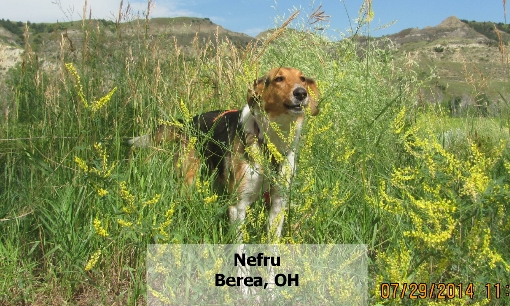From a United States Department of Agriculture (USDA) Foreign Agricultural Service program, the Pet Food Institute (PFI), the trade association that represents the largest manufacturers of pet food in the U.S. received $1,361,288.00 in 2014. Your tax dollars supporting PFI.
The USDA Foreign Agricultural Service offers many tax dollar supported programs including ‘Embassy Science Fellows Program’ which places US scientists at American embassies abroad providing expertise on environment, science and health issues. Or there is the ‘Scientific Cooperation Research Program’ which supports joint research and education projects between U.S. and international agricultural professionals.
And then there is the ‘Market Access Program’ (MAP) which “helps finance activities to market and promote U.S. agricultural commodities and products worldwide.” The Market Access Program states it “partners with U.S. agricultural trade associations, cooperatives, state regional trade groups and small businesses to share the costs of overseas marketing and promotional activities that help build commercial export markets for U.S. agricultural products and commodities.”
In 2013 this USDA program gave the Pet Food Institute $1,216,24.00
In 2014 the MAP program from USDA gave the Pet Food Institute $1,361,288.00
I’m wondering if the Pet Food institute defines itself as a ‘agricultural trade association’ or ‘small businesses’?
The ‘Organization Details’ from the USDA website tells us the “Branch” for PFI is “Field Crops & Forest Products” – Commodity/Product stated as “Pet Foods; Processed Product”.
Active Members of the Pet Food Institute include…
Big Heart Pet Brands (formerly DelMonte)
Blue Buffalo Company
Cargill Animal Nutrition
Diamond Pet Foods
Hill’s Pet Nutrition
Mars Petcare
Merrick Petfoods
Nestle Purina PetCare
P&G Pet Care
Wikipedia states “Procter & Gamble, Nestle (Purina), Mars (Petcare) and Colgate-Palmolive (Hill’s Science Diet) are thought to control 80% of the world’s pet food market.”
Pet Food Market Report & Analysis provides the “Top 25 global petfood companies for 2011” -(note: this is global sales)…
Mars Petcare Inc. $16,162 (millions of dollars) annual sales;
Nestle Purina Petcare $10,403 (millions of dollars) annual sales;
Hill’s Pet Nutrition $2,175 (millions of dollars) annual sales;
P&G Pet Care (now part of Mars Petcare) $1,802 (millions of dollars) annual sales;
Del Monte Foods (now Big Heart Brands) $1,784 (millions of dollars) annual sales.
This same USDA Foreign Agricultural Service program provided the National Renderers Association with $871,872.00 this year (2014) and $782,921.00 in 2013.
Why would the trade association representing the top five global pet food companies need government funding to help sell more pet food in foreign markets? Wouldn’t these companies/shouldn’t these companies be able to afford their own advertising to sell their products in foreign markets?
Wishing you and your pet(s) the best,
Susan Thixton
Pet Food Safety Advocate
Author Buyer Beware, Co-Author Dinner PAWsible
TruthaboutPetFood.com
Association for Truth in Pet Food
What’s in Your Pet’s Food?
Is your dog or cat eating risk ingredients? Chinese imports? Petsumer Report tells the ‘rest of the story’ on over 2500 cat foods, dog foods, and pet treats. 30 Day Satisfaction Guarantee. www.PetsumerReport.com

2014 List
Susan’s List of trusted pet foods. Click Here
Have you read Buyer Beware? Click Here
Cooking for pets made easy, Dinner PAWsible
Find Healthy Pet Foods in Your Area Click Here


































Marlene Rossman
June 30, 2014 at 12:12 pm
That is just disgusting. What about the small producers of REALLY high quality pet food? They are the ones that need the infusion of cash the most.
Many of us feed pet food that no one ever heard of. The producers of these foods do not advertise nor promote their foods. But the proof is here:
I just lost my precious almost 14 year old Labradoodle. The oncologist said that for a big dog (75lbs) she had a long life. Part of that was high quality kibble and partly mommy’s (my) cooking, exercise and love.
Pat P.
June 30, 2014 at 1:42 pm
It is infuriating! The wealthy companies with crap food get government hand-outs, whereas, the companies that care about what goes into pet food get nothing. It is similar to our human food industry. The multi-billion dollar companies receive subsidies and great gov’t insurance to grow GMO corn and soy, etc. The small organic companies, growing healthy fruits and vegetables get nothing.
Unfortunately, political collusion is the name-of-the-game. We should be able to have a petition protesting a waste and unfair allotment of our tax dollars–if only it would make a difference.
Peter
June 30, 2014 at 5:01 pm
Certainly not something the typical taxpayer would endorse, and thank you for exposing this. The “Market Accesss Program” is notable, since the purpose of PFI is to lobby before (I thought US-based) government agencies.
PFI readily acknowledges and promotes the use of by-products in pet foods as additional income for processors and farmers. (from Pet Food Institute. Fact Sheet 1994. Washington: PFI, 1994): “The growth of the pet food industry not only provided pet owners with better foods for their pets, but also created profitable additional markets for American farm products and for the byproducts of the meat packing, poultry, and other food industries which prepare food for human consumption.”
Kristi
July 1, 2014 at 3:59 am
Outrageous!!! It is just more “corporate welfare”.
Amy
July 1, 2014 at 6:18 am
Un-flippin’-believable. I agree with Peter, Pat, and Marlene. Tax dollars being given to Billion dollar organizations for the basic costs of doing business is an obscene fleecing. It is an unjustifiable use of tax revenue from individuals and the small businesses who compete with those giants.